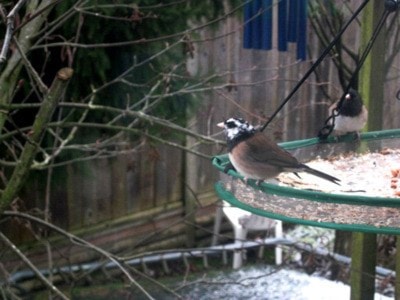On rainy, cool and sometimes downright miserable winter days it is hard to get outside.
Thanks to the invention of windows, it is still possible to enjoy nature. Even on the worst weather days there are creatures visible outside our windows, eking out an existence.
The birds — feathered, flitting, foraging and fleeting — always on the move. A perfect winter distraction or inspiration. Just turn off the television screen or the computer screen and look out your window to enjoy some live action.
Of course, it does require venturing out to fill the bird feeder once and a while. Once you fill it, sit back and see what variety of birds you attract. There are dozens of bird species in the Langley area.
I keep thinking I should make a list of the who’s who who come to our feeder (does it sound like I’m talking about owls?).
We regularly get at least five species a day and sometimes unusual ones like downy woodpeckers or evening grosbeaks show up.
One of the coolest birds showing up lately is a leucistic junco. Leucistic refers to an unusual colour form of a given kind of bird. Our leucistic junco has a mottled white and black head instead of the typical dark grey head of the dark-eyed junco.
If you enjoy watching your bird feeder and are more organized than I am, you can sign up for Project FeederWatch organized by Bird Studies Canada. From November to April, FeederWatch participants across Canada report the birds they observe on their backyard feeders.
In 2009-10, 2,499 homes took part. The number one bird at BC feeders was the dark-eyed junco.
Another big opportunity to count backyard birds is coming up Feb. 18 to 21.
It’s called “The Great Backyard Bird Count” run by the Cornell Lab of Ornithology. Last year participants from all over North America recorded 602 species and made 11.2 million individual bird observations in the process.
These counts are a great way of engaging average citizens in the process of keeping track of bird populations. Bird counts are also a good way of tracking how the environment as a whole is doing – a proverbial canary in the coal mine, so to speak!
Bird watching is good for you too. What better way to brighten a dull, cloudy day than to look out and see the bright eyes of one of our fine feathered friends staring back at you?
David Clements is a professor of Biology and Environmental Studies at Trinity Western University.
